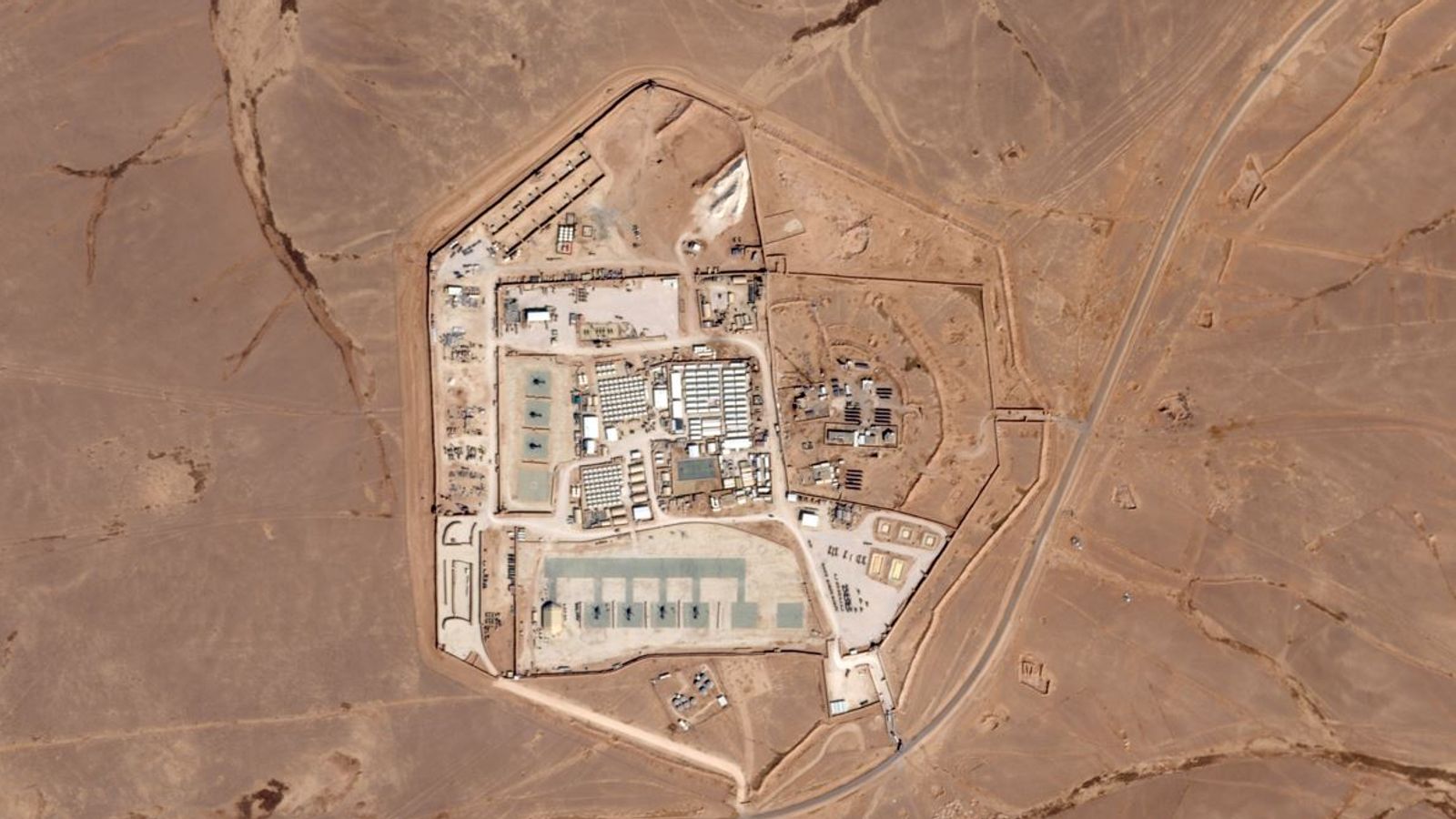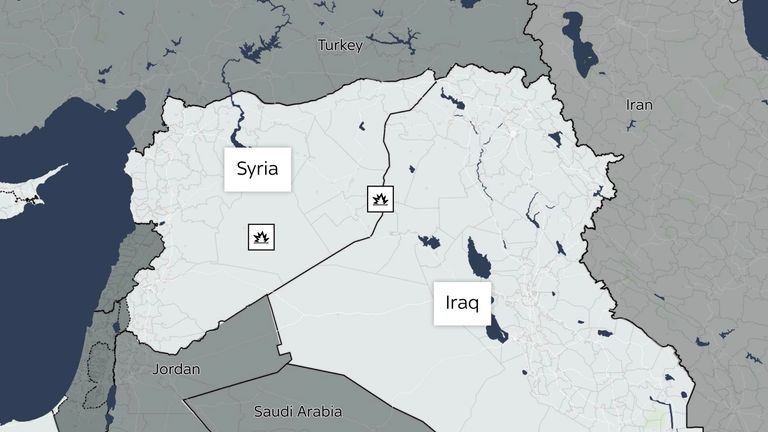The US is trying to hit Iranian targets in the Middle East hard enough to stop attacks against American forces but not so hard that it triggers wider escalation or even direct war with Iran.
Experts in recent days have dubbed the strategy the “Goldilocks” approach because it needs to be just right.
Joe Biden made clear that a response was coming from the moment he accused “radical Iran-backed militant groups operating in Syria and Iraq” of killing three US service personnel in Jordan in a drone attack almost a week ago.
But the president also signalled his retaliation would be calculated rather than rushed, saying it would be “at a time and in a manner of our choosing”.
Middle East latest:
US begins wave of airstrikes in Iraq and Syria
This bought the administration time to try to navigate the slimmest of paths between a meaningful, powerful and effective military strike against Iranian interests and igniting new conflict in a region that is already at boiling point following the 7 October Hamas attack on Israel that prompted the Israeli war in Gaza.
By choosing not to hit Iran itself directly, Mr Biden has very deliberately sought to avoid escalation, even though he could potentially have justified strikes inside Iranian territory given Tehran’s alleged backing of the groups accused of the lethal drone attack in Jordan.
However, he has still chosen to go after Iran’s elite Quds Force, within the Islamic Revolutionary Guards Corps (IRGC) – the most potent arm of Iranian military power in the region and the organisation that runs Tehran’s network of proxy militias.
This level of attack could yet trigger a direct, escalatory Iranian response against US targets. Washington will be hoping it won’t.
Read more:
What we know about sites targeted in US strikes
Action may have unintended and far-reaching consequences
Sky News experts on why Biden ordered bombing raid
Almost exactly three years ago, when Donald Trump was president, the US killed the top Iranian general who had led the Quds Force during its most effective period of proxy warfare against US, British and other Western interests in the Middle East.
The assassination of Qasem Soleimani in a drone strike in Iraq in January 2020 triggered an Iranian missile attack against US forces, also in Iraq, in response – a moment of acute peril when the two sides last seemed on the brink of spiralling into all-out war.
That did not happen.
This time around, the Biden administration will likely have tried to work behind the scenes with Iran to reduce the risk of a similar kind of Iranian retaliation in kind.
Washington has also stated that Friday’s strikes were just the beginning, meaning that its adversaries are on notice.
The president again framed his threat to give a sense that this was the US calling the shots rather than being forced into taking action.
“Our response began today,” he said in a statement released by the White House on Friday. “It will continue at times and places of our choosing.”
He added: “The United States does not seek conflict in the Middle East or anywhere else in the world. But let all those who might seek to do us harm know this: If you harm an American, we will respond.”
For now, perhaps the biggest danger for the United States is that its barrage of strikes against 85 Iranian-linked targets in Iraq and Syria will not be sufficient to deter new attacks that harm or take more American lives.
If that happens again, the president may be left with no choice but to order strikes against Iran directly.


